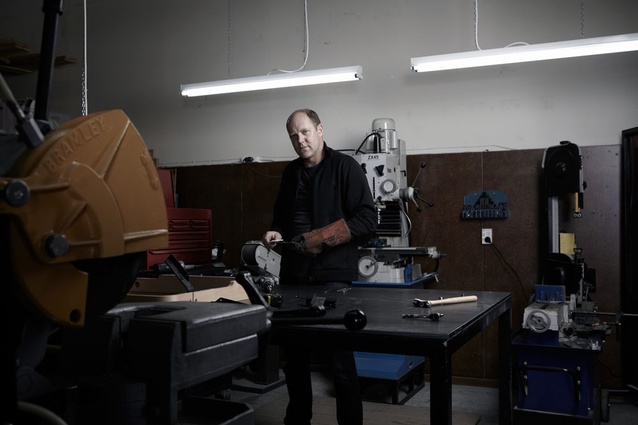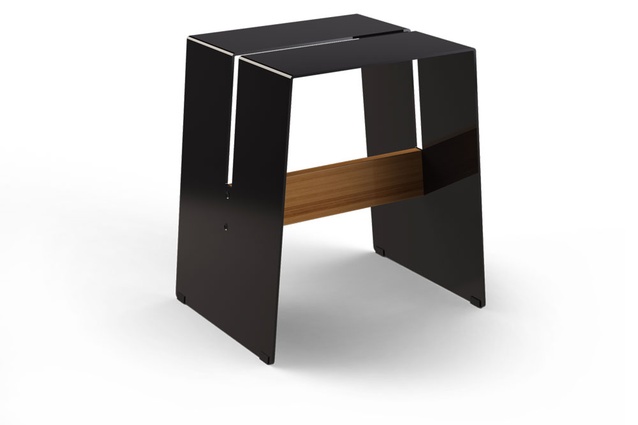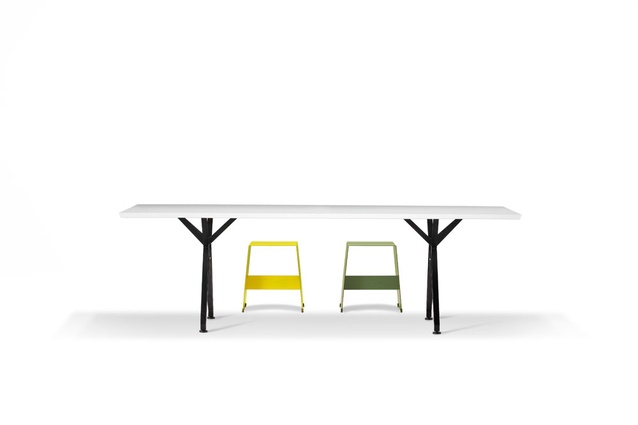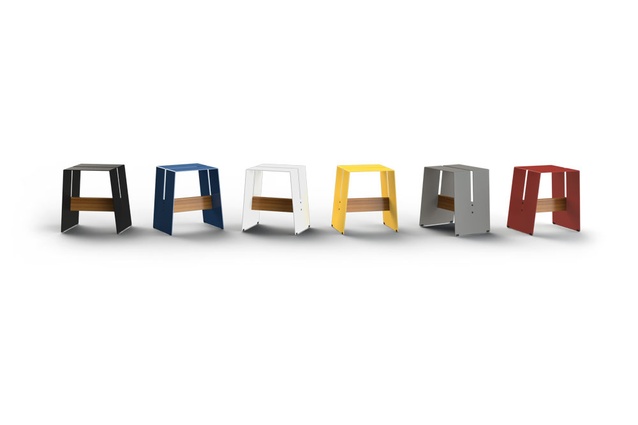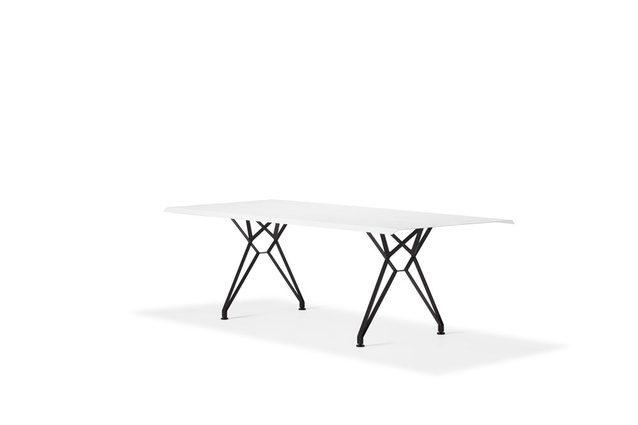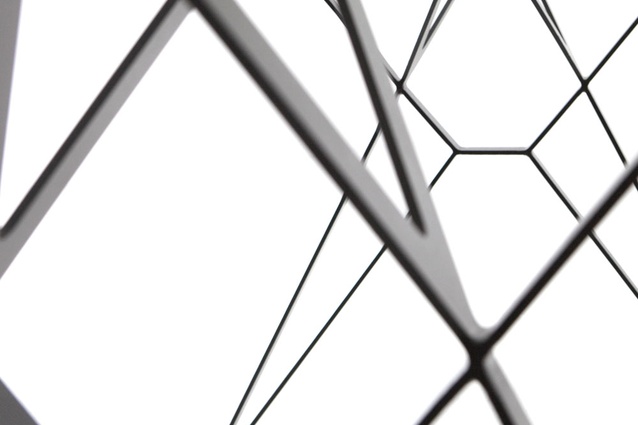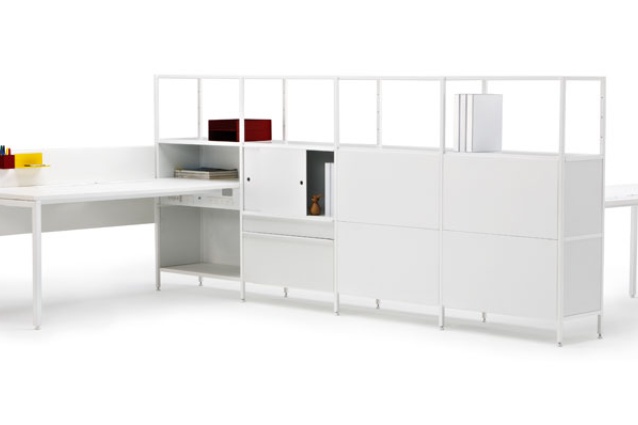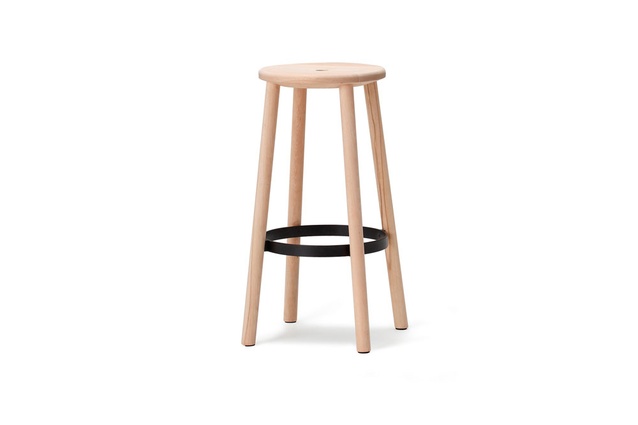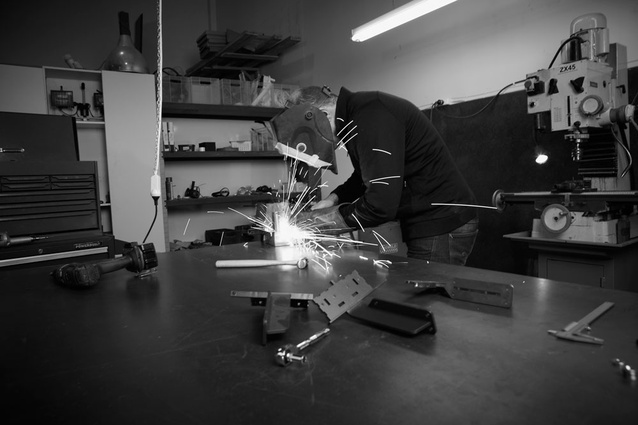With Sam Haughton, from IMO
Interior ventures into the workshop of IMO’s Sam Haughton, a designer who likes his furniture to live quietly in its environment.
Sam, you set up IMO in 2003. What were you doing before that? Where did you train?
I studied history and social science at Victoria University, which in hindsight fostered my interest in using materials in a way that they might be mass produced. Design doesn’t have to be expensive or elitist, just good and accessible. I like the notion of “good design for all”. I opened a workshop in 1992, designing and manufacturing one-off commissions, and over time developed a standard product range. As the business grew, I started to outsource the manufacturing, which is when I really started to understand how things were made.
I would describe your products as quite modernist in that the aesthetic beauty comes from the simplicity of the forms. Agree?
There is a consistent language that runs through our designs, but there isn’t a big focus during development on making things look a certain way. Our products are quite neutral; designs that are overly concerned with aesthetics don’t survive long-term. I like things that live quietly in their environment.
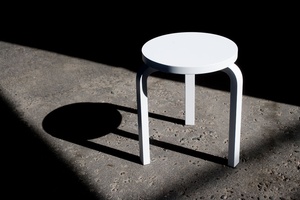
Whose furniture do you admire?
I’ve long been inspired by designers such as Jean Prouvé and Jasper Morrison. I get inspiration from all sorts of people and things, but I admire different designers for different reasons: Prouvé for his systematic approach to design and the making process, from the materials, machines and tools right up to the product’s dispatch – fastidiously refining the product and its construction. His intimate knowledge of steel and the way in which he applied that to furniture was phenomenal. Dieter Rams, for his anti-style, his integrity and functional, enduring products. Jasper Morrison, well “Super Normal” sums it up. And Aalto – I wish I had designed the 60 Stool!
In the past you’ve included a lot of steel in your work. Is that your preferred material?
Definitely. The strength of steel allows you to achieve a visual lightness that other easily accessible materials can’t achieve. If we built the uprights of Kase from timber, for example, we couldn’t attain that same fineness without compromising the strength. It’s also cost effective and, more importantly, durable. I think both designer and consumer have a responsibility to look for products that last; products that can be passed on to the next generation.

How do you decide what to put into production? Do you spot a niche, or is it about developing a complete range?
Good question, a bit of both really. Idea generation is the easy part. Beyond this, developing a product is a long, demanding process, so we don’t enter into it lightly. It takes time to fully understand if a design works or not. Design is a process of discovery and every product is different; it’s hard to know at the start what issues will arise that may alter the development. There’s a really exciting point in the development of a product when all the details are resolved and it starts to come together. It doesn’t happen all of the time, but you clearly know when it’s right. I guess I make those decisions more quickly now too, your instinct gets better with experience.
Often a client will come to us with a request and we have a product sitting in the development stage that might be suitable, so we fast-track it, which is what happened with the A2 Stool for Fisher & Paykel. How the product is delivered to market is also critical – the success of the marketing, distribution and servicing has a huge impact on its viability. A good piece of furniture marries these things together. The development process doesn’t stop once the product goes to market either.
Some of your products have 10-year warranties. That indicates a confidence in their longevity … and a confidence in your manufacturer.
All of our products have a 10-year warranty, aside from the outdoor products. It’s a commitment to what we make. We have a network of specialist partnerships that we outsource to, then components are assembled and distributed from our warehouse. We have a limited number of manufacturers to choose from in New Zealand, and the number of those that can help us create well-made, quality products is even smaller. You work out pretty quick who shares the same goals and values.
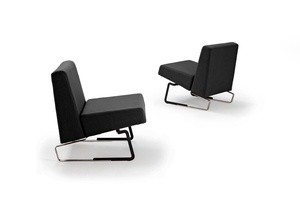
Your products are New Zealand made. Is this ever a disadvantage?
No, not really. We involve our manufacturers heavily throughout the processes of development and transfer to production. The insights and innovations gained from challenging materials and connections in the manufacturing process inform and improve your product. That only happens face to face, usually on the factory floor. Compromise can become opportunity; it makes the design more real, more viable, and ensures that the product fulfils its design intent long-term.
Our physical and social environment will always impose certain factors – disadvantages of scale, tight R&D budgets and limited local-manufacturing capabilities. So it is challenging, but we have a unique way of approaching problems that comes from living here. You are forced to exploit restricted resources and constraints to come up with new solutions. Being able to customise a product and work to shorter lead times is a real benefit for specifiers and end users. Being “made here” supports our local economy. It’s about the sustainable use of resources, shortening the supply chain and reducing consumption from transporting products around the world. This is where our focus has shifted to offshore licensing. It’s the most efficient use of our resources – we don’t have to boost our capability to deal with offshore manufacturing complexities.

